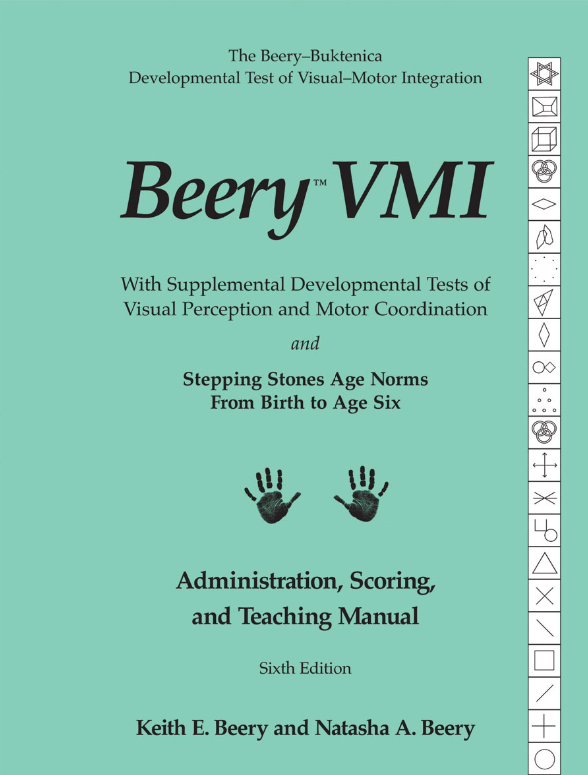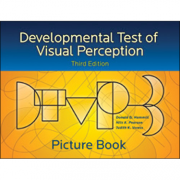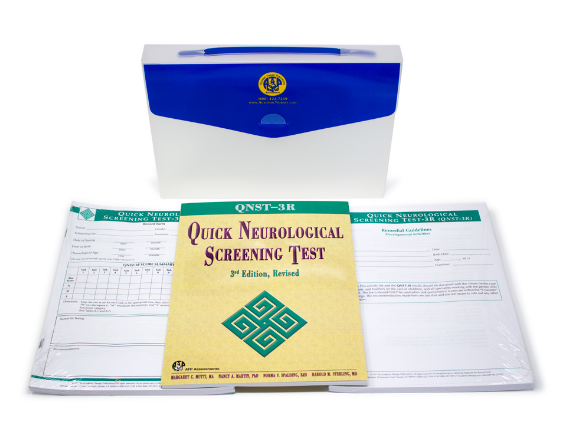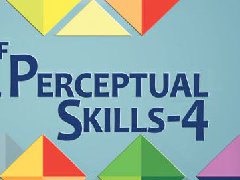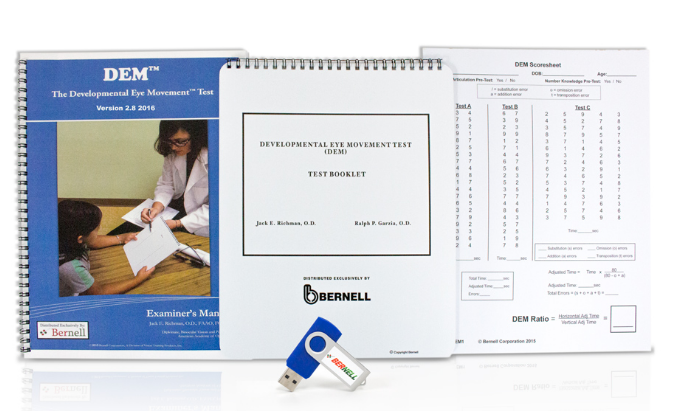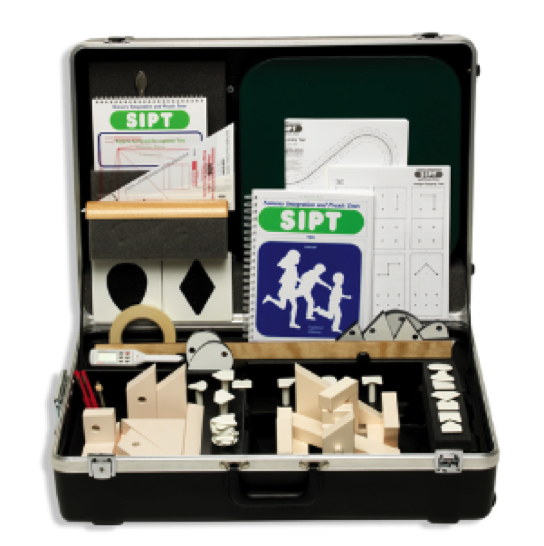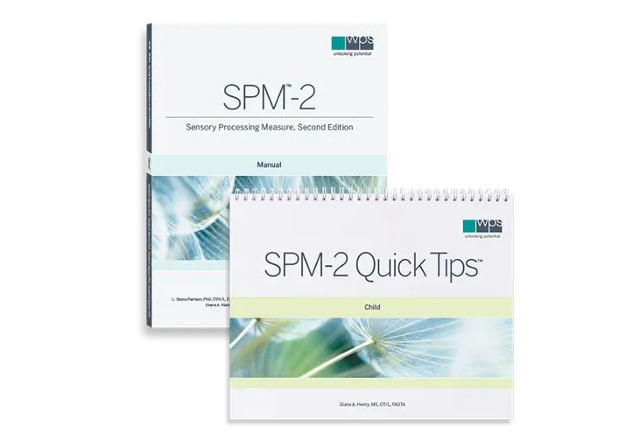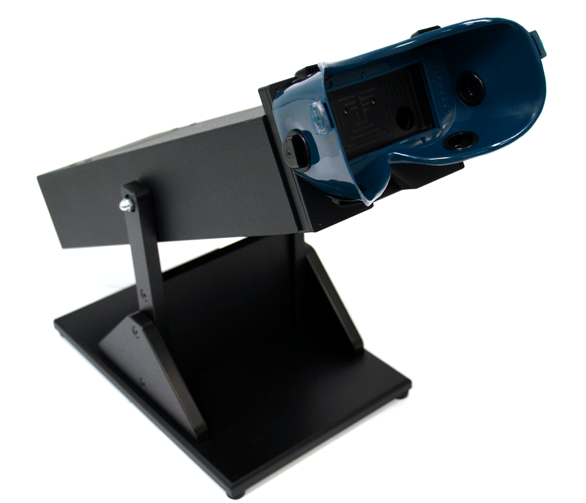DTVP-A: Developmental Test of Visual Perception–Adolescent and Adult The DTVP-A is a battery of six subtests that measure different but interrelated visual-perceptual and visual-motor abilities. The battery has empirically established reliability and validity. The normative sample consists of 1,664 adolescents and adults residing in 19 states; demographic characteristics approximate the current census data. Evidence is provided to show that the test is unbiased with respect to gender and race. The DTVP-A is the latest test based on the work of Marianne Frostig. It can be administered by psychologists, neuropsychologists, occupational therapists, physical therapists, regular and special educators, and diagnosticians who are interested in examining the visual-perceptual status and visual-motor integration skills of adolescents and adults. The DTVP-A is especially useful in the evaluation of the neuropsychological integrity of TBI and stroke patients where right-hemisphere function may be at issue. Normed through age 75, the DTVP-A has sufficient floor or easy items to allow accurate assessment of even individuals with severe TBI and other neurologically impaired individuals. The reliability of the various subtests and index scores indicates that the DTVP-A will be sensitive to improvement over the course of treatment. The subtests and indexes also will suggest areas of emphasis in cognitive and fine motor rehabilitation. The DTVP-A is particularly useful in distinguishing true visual-perceptual deficits from problems solely with complex eye-hand or perceptual-motor actions. The DTVP-A may also assist in differential diagnosis of various of the dementias in elderly patients, providing a baseline for normal aging changes in perception and perceptual-motor skills against which the referred patient may be referenced. Subtests Subtest 1-Copying: Individuals are shown a simple figure and asked to draw it on a piece of paper. The figure serves as a model for the drawing. Subtest 2-Figure-Ground: Individuals are shown stimulus figures and asked to find as many of the figures as they can on a page where the figures are hidden in a complex, confusing background. Subtest 3-Visual-Motor Search: The individual is shown a page covered in numbered circles, randomly arranged on the page. The individual connects the circles with a line, in numerical sequence, as quickly as possible. Subtest 4-Visual Closure: Individuals are shown a stimulus figure and asked to select the exact figure from a series of figures that have been incompletely drawn. Subtest 5-Visual-Motor Speed: Individuals are shown (a) four different geometric designs, two of which have special marks in them, and (b) a page filled completely with the four designs, none of which have marks in them. Subtest 6-Form Constancy: Individuals are shown a stimulus figure and asked to find it in a series of figures. In the series, the targeted figure will have a different size, position, and/or shade, and it may be hidden in a distracting background. Composite Scores or Indexes The most reliable scores for the DTVP-A are the indexes. These scores are found by adding the standard scores of the subtests that comprise a composite and converting the sum to an index. General Visual-Perceptual Index: The GVPI is the best measure of what the majority of people mean when they say "visual perception." Data from six subtests, each of which measures a different type of visual perception in a different manner, contribute to the GVPI. When GVPIs are below 90, examiners need to pay more attention to the clinically important indexes- the Motor-Reduced Visual Perceptual Index (MRPI) and the Visual-Motor Integration Index (VMII). Examination of these indexes may help explain the causes for low GVPIs. Motor-Reduced Visual Perception Index: Of all of the DTVP-A indexes, the MRPI is the "purest" and most direct measure of visual perception in that only minimal motor skills (e.g., pointing) are required to show perceptual competence. This index is formed by combining the standard scores from the Figure-Ground, Visual Closure, and Form Constancy Subtests. Visual-Motor Integration Index: To do well on this composite, individuals must perform complex eye-hand coordination tasks. Low scores do not necessarily indicate poor visual perception; they may mean that the individuals have awkward hand movements or that they have difficulty coordinating hand-to-eye movements. This index is formed by combining the standard scores of the Copying, Visual-Motor Search, and Visual-Motor Speed Subtests. Special Features of the DTVP-A Subtests were developed to be appropriate for adolescents and adults. The normative sample reflects the current population characteristics of the United States relative to race, ethnicity, gender, geographic region, parent education, and income. Internal consistency, stability, and interscorer reliability for all indexes are high. Validity evidence shows that all DTVP-A subtests and indexes are useful for measuring visual-perceptual and visual-motor integration skills. Evidence is provided to show that the test is unbiased with respect to gender and race. COMPLETE DTVP-A KIT INCLUDES: Examiners Manual, Picture Book, 25 Profile/Examiner Record Forms, and 25 Response Booklets, all in a sturdy storage box. (©2002) DTVP-A: Developmental Test of Visual Perception–Adolescent and Adult Cecil R. Reynolds • Nils A. Pearson • Judith K. Voress Product Number:10350 Test Level:B Format:KIT Weight6 lbs.11 oz. A comprehensive measure of visual perception that reliably differentiates visual-perceptual problems from visual-motor integration deficit! Ages: 11-0 through 74-11 Testing Time: 25 minutes Administration: Individual DTVP-A Examiners Manual Cecil R. Reynolds • Nils A. Pearson • Judith K. Voress Product Number:10351 Test Level:B Format:MANL Weight1 lbs.2 oz. DTVP-A Picture Book Cecil R. Reynolds • Nils A. Pearson • Judith K. Voress Product Number:10352 Test Level:B Format:PICBK Weight1 lbs.11 oz. DTVP-A Profile/Examiner Record Form (25) Cecil R. Reynolds | Nils A. Pearson | Judith K. Voress Product Number:10353 Test Level:B Format:FORMS Weight0 lbs.10 oz. DTVP-A Response Booklet (25) Cecil R. Reynolds | Nils A. Pearson | Judith K. Voress Product Number:10354 Test Level:B Format:RECBK Weight2 lbs.11 oz.
DTVP-A: Developmental Test of Visual Perception–Adolescent and Adult The DTVP-A is a battery of six subtests that measure different but interrelated visual-perceptual and visual-motor abilities. The battery has empirically established reliability and validity. The normative sample consists of 1,664 adolescents and adults residing in 19 states; demographic characteristics approximate the current census data. Evidence is provided to show that the test is unbiased with respect to gender and race. The DTVP-A is the latest test based on the work of Marianne Frostig. It can be administered by psychologists, neuropsychologists, occupational therapists, physical therapists, regular and special educators, and diagnosticians who are interested in examining the visual-perceptual status and visual-motor integration skills of adolescents and adults. The DTVP-A is especially useful in the evaluation of the neuropsychological integrity of TBI and stroke patients where right-hemisphere function may be at issue. Normed through age 75, the DTVP-A has sufficient floor or easy items to allow accurate assessment of even individuals with severe TBI and other neurologically impaired individuals. The reliability of the various subtests and index scores indicates that the DTVP-A will be sensitive to improvement over the course of treatment. The subtests and indexes also will suggest areas of emphasis in cognitive and fine motor rehabilitation. The DTVP-A is particularly useful in distinguishing true visual-perceptual deficits from problems solely with complex eye-hand or perceptual-motor actions. The DTVP-A may also assist in differential diagnosis of various of the dementias in elderly patients, providing a baseline for normal aging changes in perception and perceptual-motor skills against which the referred patient may be referenced. Subtests Subtest 1-Copying: Individuals are shown a simple figure and asked to draw it on a piece of paper. The figure serves as a model for the drawing. Subtest 2-Figure-Ground: Individuals are shown stimulus figures and asked to find as many of the figures as they can on a page where the figures are hidden in a complex, confusing background. Subtest 3-Visual-Motor Search: The individual is shown a page covered in numbered circles, randomly arranged on the page. The individual connects the circles with a line, in numerical sequence, as quickly as possible. Subtest 4-Visual Closure: Individuals are shown a stimulus figure and asked to select the exact figure from a series of figures that have been incompletely drawn. Subtest 5-Visual-Motor Speed: Individuals are shown (a) four different geometric designs, two of which have special marks in them, and (b) a page filled completely with the four designs, none of which have marks in them. Subtest 6-Form Constancy: Individuals are shown a stimulus figure and asked to find it in a series of figures. In the series, the targeted figure will have a different size, position, and/or shade, and it may be hidden in a distracting background. Composite Scores or Indexes The most reliable scores for the DTVP-A are the indexes. These scores are found by adding the standard scores of the subtests that comprise a composite and converting the sum to an index. General Visual-Perceptual Index: The GVPI is the best measure of what the majority of people mean when they say "visual perception." Data from six subtests, each of which measures a different type of visual perception in a different manner, contribute to the GVPI. When GVPIs are below 90, examiners need to pay more attention to the clinically important indexes- the Motor-Reduced Visual Perceptual Index (MRPI) and the Visual-Motor Integration Index (VMII). Examination of these indexes may help explain the causes for low GVPIs. Motor-Reduced Visual Perception Index: Of all of the DTVP-A indexes, the MRPI is the "purest" and most direct measure of visual perception in that only minimal motor skills (e.g., pointing) are required to show perceptual competence. This index is formed by combining the standard scores from the Figure-Ground, Visual Closure, and Form Constancy Subtests. Visual-Motor Integration Index: To do well on this composite, individuals must perform complex eye-hand coordination tasks. Low scores do not necessarily indicate poor visual perception; they may mean that the individuals have awkward hand movements or that they have difficulty coordinating hand-to-eye movements. This index is formed by combining the standard scores of the Copying, Visual-Motor Search, and Visual-Motor Speed Subtests. Special Features of the DTVP-A Subtests were developed to be appropriate for adolescents and adults. The normative sample reflects the current population characteristics of the United States relative to race, ethnicity, gender, geographic region, parent education, and income. Internal consistency, stability, and interscorer reliability for all indexes are high. Validity evidence shows that all DTVP-A subtests and indexes are useful for measuring visual-perceptual and visual-motor integration skills. Evidence is provided to show that the test is unbiased with respect to gender and race. COMPLETE DTVP-A KIT INCLUDES: Examiners Manual, Picture Book, 25 Profile/Examiner Record Forms, and 25 Response Booklets, all in a sturdy storage box. (©2002) DTVP-A: Developmental Test of Visual Perception–Adolescent and Adult Cecil R. Reynolds • Nils A. Pearson • Judith K. Voress Product Number:10350 Test Level:B Format:KIT Weight6 lbs.11 oz. A comprehensive measure of visual perception that reliably differentiates visual-perceptual problems from visual-motor integration deficit! Ages: 11-0 through 74-11 Testing Time: 25 minutes Administration: Individual DTVP-A Examiners Manual Cecil R. Reynolds • Nils A. Pearson • Judith K. Voress Product Number:10351 Test Level:B Format:MANL Weight1 lbs.2 oz. DTVP-A Picture Book Cecil R. Reynolds • Nils A. Pearson • Judith K. Voress Product Number:10352 Test Level:B Format:PICBK Weight1 lbs.11 oz. DTVP-A Profile/Examiner Record Form (25) Cecil R. Reynolds | Nils A. Pearson | Judith K. Voress Product Number:10353 Test Level:B Format:FORMS Weight0 lbs.10 oz. DTVP-A Response Booklet (25) Cecil R. Reynolds | Nils A. Pearson | Judith K. Voress Product Number:10354 Test Level:B Format:RECBK Weight2 lbs.11 oz.

-2-上海瑞狮生物科技有限公司.jpg)
-3-上海瑞狮生物科技有限公司.jpg)
DTVP-A视觉感知发展测试(青少年和成人版)
DTVP-A视觉感知发展测试(青少年和成人版)(Developmental Test of Visual Perception–Adolescent and Adult, DTVP-A),是能较全面度量视觉感知方面的一种纸笔评估量表,可以区分视觉感知问题和视觉运动整合障碍!
- 开发者:Cecil R. Reynolds • Nils A. Pearson • Judith K. Voress
- 发布年份:2002年
- 目的:区分视觉感知问题和视觉运动整合障碍
- 年龄范围:11岁—74岁11个月
- 时间:25分钟
- 形式:单人测试
- 资质等级:B
DTVP-A视觉感知发展测试,由六个子测试组成,测量不同但相互关联的视觉知觉和视觉运动能力。经验证,DTVP-A测试套装确定了其可靠性和有效性,标准样本由居住在19个州的1,664名青少年和成年人组成;人口统计学特征近似于当前的人口普查数据。证据表明该测试在性别和种族方面没有偏见。
DTVP-A基于玛丽安·弗罗斯蒂格(Marianne Frostig)的最新测试。可以由心理学家、神经心理学家、职业治疗师、物理治疗师、常规和特殊的教育工作者以及对检查青少年和成人的视觉感知状态和视觉运动整合技能感兴趣的诊断专家来实施。
DTVP-A在评估创伤性脑损伤和脑卒中患者的神经心理完整性时尤其有用,因为右半球功能可能存在问题。DTVP-A标准化到75岁,有足够的下限或简单的测试项目,即使是重度脑外伤患者和其他神经功能受损的患者,也可以进行准确的评估。各子测验和指标得分的可靠性表明,DTVP-A对治疗过程中的改善情况表现敏感。
子测验和索引还提示认知和精细运动康复方面的重点领域。DTVP-A在区分视觉-知觉缺陷和仅仅是复杂的眼-手或知觉运动行为的问题时特别有用。DTVP-A还可以帮助对老年患者的各种痴呆症进行鉴别诊断,为所需要的患者,提供是否为感知和知觉运动技能的正常衰老变化提供一种基础性参考。
子测验
- 子测试1-复制:向被测试人显示一个简单的图形,并要求将其画在一张纸上。该图用作图纸的模型。
- 子测试2-图形-背景:向被测试个体显示刺激图形,并要求他们在页面上找到尽可能多的图形,而这些图形隐藏在复杂而混乱的背景中。
- 子测验3-视觉-运动搜索:向被测试个体展示一页随机排列被数字圆圈覆盖的页面,个体以数字顺序尽可能快地将圆与直线连接起来。
- 子测试4-视觉封闭:向个体显示刺激图形,并要求他们从一系列未完整绘制的图形中选择确切的图形。
- 子测验5-视觉-运动速度:给被测试个体展示(a)四种不同的几何设计,其中两种有特殊的标记,以及(b)一页完全填满了这四种图案,但没有一种图案有标记。
- 子测验6-形式恒常性:向被测试个体展示一个刺激图形,并要求在一系列图形中找到它。在这个系列中,目标物将有不同的大小、位置和/或阴影,并且可能隐藏在分散注意力的背景中。
综合得分或指数
DTVP-A可靠的得分是指数。分数是通过将组成合成题的子测验的标准分数相加,并将总和转换为一个指数得到的。
- 总体视觉感知指数(GVPI):GVPI是衡量大多数人所说“视觉感知”含义的方法。GVPI数值来自六个子测验的数据贡献,每个子测验以不同的方式衡量不同类型的视觉感知。当GVPI低于90时,检查者需要更加关注临床上重要的指标——运动减少视觉感知觉指数(MRPI)和视觉运动整合指数(VMII)。对这些指标的检查有助于解释GVPI偏低的原因。
- 运动减少视觉感知指数(MRPI):在所有DTVP-A指数中,MRPI是视觉感知的最直接的衡量标准,因为仅需极少的运动技能(例如,指向)即可表现出感知能力。该指数由图形背景、视觉闭合和形式恒常性子测验的标准分数组合而成。
- 视觉-运动整合指数(VMII):要想在这个组合测试上取得好成绩,被测试个体必须完成复杂的眼-手协调任务。低分数并不一定意味着视觉感知能力差;也可能意味着个体的手部动作笨拙,或者他们难以协调手到眼的动作。该指数由复写、视觉运动搜索和视觉运动速度子测验的标准分数组成。
DTVP-A的特点
- 为了适合青少年和成人,制定了子测验。
- 标准样本反映了当前美国人口的种族、性别、地理区域、父母教育背景和收入的特征。
- 所有指标的内部一致性、稳定性和核心间可靠性高。
- 有效性证据表明,所有DTVP-A子测验和指标都有助于测量视觉感知和视觉运动整合技能。
- 提供的证据表明该测试在性别和种族方面没有偏见。
DTVP-A视觉感知发展测试(青少年和成人版)套件包括
完整的DTVP-A套件包括:考官手册、画册、25份个人资料/考官记录表和25份答卷册,全部放在一个坚固的储物箱中。(©2002年)
DTVP-A视觉感知发展测试(青少年和成人版)(Developmental Test of Visual Perception–Adolescent and Adult, DTVP-A),文献索引(部分):
- Prax Kinderpsychol Kinderpsychiatr. 2015;64(8):601-16. doi: 10.13109/prkk.2015.64.8.601.
- 请仔细阅读以下本产品重要说明。
本产品重要说明:
- 语言:英文
- 计分表格:纸张
- 国际惯例:相应的专业人员购买并使用
- 产品主要参数:Developmental Test of Visual Perception–Adolescent and Adult (DTVP-A)
- 原装进口,产地美国
- 尊重并维护知识产权,请在需要的时候,按以下列表选择购买使用量表类产品,以实现教学、科研等工作的严谨性和信效度
| 套装 | ||
| 10350 | DTVP-A视觉感知发展测试(青少年和成人版),完全套装 | 电邮询价 |
| 手册 | ||
| 10351 | DTVP-A视觉感知发展测试(青少年和成人版),考官手册 | 电邮询价 |
| 管理组件 | ||
| 10352 | DTVP-A视觉感知发展测试(青少年和成人版),画册 | 电邮询价 |
| 记录表(量表) | ||
| 10353 | DTVP-A视觉感知发展测试(青少年和成人版),个人资料/考官记录表,25份 | 电邮询价 |
| 10354 | DTVP-A视觉感知发展测试(青少年和成人版),答卷册,25份 | 电邮询价 |
DTVP-A: Developmental Test of Visual Perception–Adolescent and Adult The DTVP-A is a battery of six subtests that measure different but interrelated visual-perceptual and visual-motor abilities. The battery has empirically established reliability and validity. The normative sample consists of 1,664 adolescents and adults residing in 19 states; demographic characteristics approximate the current census data. Evidence is provided to show that the test is unbiased with respect to gender and race. The DTVP-A is the latest test based on the work of Marianne Frostig. It can be administered by psychologists, neuropsychologists, occupational therapists, physical therapists, regular and special educators, and diagnosticians who are interested in examining the visual-perceptual status and visual-motor integration skills of adolescents and adults. The DTVP-A is especially useful in the evaluation of the neuropsychological integrity of TBI and stroke patients where right-hemisphere function may be at issue. Normed through age 75, the DTVP-A has sufficient floor or easy items to allow accurate assessment of even individuals with severe TBI and other neurologically impaired individuals. The reliability of the various subtests and index scores indicates that the DTVP-A will be sensitive to improvement over the course of treatment. The subtests and indexes also will suggest areas of emphasis in cognitive and fine motor rehabilitation. The DTVP-A is particularly useful in distinguishing true visual-perceptual deficits from problems solely with complex eye-hand or perceptual-motor actions. The DTVP-A may also assist in differential diagnosis of various of the dementias in elderly patients, providing a baseline for normal aging changes in perception and perceptual-motor skills against which the referred patient may be referenced. Subtests Subtest 1-Copying: Individuals are shown a simple figure and asked to draw it on a piece of paper. The figure serves as a model for the drawing. Subtest 2-Figure-Ground: Individuals are shown stimulus figures and asked to find as many of the figures as they can on a page where the figures are hidden in a complex, confusing background. Subtest 3-Visual-Motor Search: The individual is shown a page covered in numbered circles, randomly arranged on the page. The individual connects the circles with a line, in numerical sequence, as quickly as possible. Subtest 4-Visual Closure: Individuals are shown a stimulus figure and asked to select the exact figure from a series of figures that have been incompletely drawn. Subtest 5-Visual-Motor Speed: Individuals are shown (a) four different geometric designs, two of which have special marks in them, and (b) a page filled completely with the four designs, none of which have marks in them. Subtest 6-Form Constancy: Individuals are shown a stimulus figure and asked to find it in a series of figures. In the series, the targeted figure will have a different size, position, and/or shade, and it may be hidden in a distracting background. Composite Scores or Indexes The most reliable scores for the DTVP-A are the indexes. These scores are found by adding the standard scores of the subtests that comprise a composite and converting the sum to an index. General Visual-Perceptual Index: The GVPI is the best measure of what the majority of people mean when they say "visual perception." Data from six subtests, each of which measures a different type of visual perception in a different manner, contribute to the GVPI. When GVPIs are below 90, examiners need to pay more attention to the clinically important indexes- the Motor-Reduced Visual Perceptual Index (MRPI) and the Visual-Motor Integration Index (VMII). Examination of these indexes may help explain the causes for low GVPIs. Motor-Reduced Visual Perception Index: Of all of the DTVP-A indexes, the MRPI is the "purest" and most direct measure of visual perception in that only minimal motor skills (e.g., pointing) are required to show perceptual competence. This index is formed by combining the standard scores from the Figure-Ground, Visual Closure, and Form Constancy Subtests. Visual-Motor Integration Index: To do well on this composite, individuals must perform complex eye-hand coordination tasks. Low scores do not necessarily indicate poor visual perception; they may mean that the individuals have awkward hand movements or that they have difficulty coordinating hand-to-eye movements. This index is formed by combining the standard scores of the Copying, Visual-Motor Search, and Visual-Motor Speed Subtests. Special Features of the DTVP-A Subtests were developed to be appropriate for adolescents and adults. The normative sample reflects the current population characteristics of the United States relative to race, ethnicity, gender, geographic region, parent education, and income. Internal consistency, stability, and interscorer reliability for all indexes are high. Validity evidence shows that all DTVP-A subtests and indexes are useful for measuring visual-perceptual and visual-motor integration skills. Evidence is provided to show that the test is unbiased with respect to gender and race. COMPLETE DTVP-A KIT INCLUDES: Examiners Manual, Picture Book, 25 Profile/Examiner Record Forms, and 25 Response Booklets, all in a sturdy storage box. (©2002) DTVP-A: Developmental Test of Visual Perception–Adolescent and Adult Cecil R. Reynolds • Nils A. Pearson • Judith K. Voress Product Number:10350 Test Level:B Format:KIT Weight6 lbs.11 oz. A comprehensive measure of visual perception that reliably differentiates visual-perceptual problems from visual-motor integration deficit! Ages: 11-0 through 74-11 Testing Time: 25 minutes Administration: Individual DTVP-A Examiners Manual Cecil R. Reynolds • Nils A. Pearson • Judith K. Voress Product Number:10351 Test Level:B Format:MANL Weight1 lbs.2 oz. DTVP-A Picture Book Cecil R. Reynolds • Nils A. Pearson • Judith K. Voress Product Number:10352 Test Level:B Format:PICBK Weight1 lbs.11 oz. DTVP-A Profile/Examiner Record Form (25) Cecil R. Reynolds | Nils A. Pearson | Judith K. Voress Product Number:10353 Test Level:B Format:FORMS Weight0 lbs.10 oz. DTVP-A Response Booklet (25) Cecil R. Reynolds | Nils A. Pearson | Judith K. Voress Product Number:10354 Test Level:B Format:RECBK Weight2 lbs.11 oz.
DTVP-A: Developmental Test of Visual Perception–Adolescent and Adult The DTVP-A is a battery of six subtests that measure different but interrelated visual-perceptual and visual-motor abilities. The battery has empirically established reliability and validity. The normative sample consists of 1,664 adolescents and adults residing in 19 states; demographic characteristics approximate the current census data. Evidence is provided to show that the test is unbiased with respect to gender and race. The DTVP-A is the latest test based on the work of Marianne Frostig. It can be administered by psychologists, neuropsychologists, occupational therapists, physical therapists, regular and special educators, and diagnosticians who are interested in examining the visual-perceptual status and visual-motor integration skills of adolescents and adults. The DTVP-A is especially useful in the evaluation of the neuropsychological integrity of TBI and stroke patients where right-hemisphere function may be at issue. Normed through age 75, the DTVP-A has sufficient floor or easy items to allow accurate assessment of even individuals with severe TBI and other neurologically impaired individuals. The reliability of the various subtests and index scores indicates that the DTVP-A will be sensitive to improvement over the course of treatment. The subtests and indexes also will suggest areas of emphasis in cognitive and fine motor rehabilitation. The DTVP-A is particularly useful in distinguishing true visual-perceptual deficits from problems solely with complex eye-hand or perceptual-motor actions. The DTVP-A may also assist in differential diagnosis of various of the dementias in elderly patients, providing a baseline for normal aging changes in perception and perceptual-motor skills against which the referred patient may be referenced. Subtests Subtest 1-Copying: Individuals are shown a simple figure and asked to draw it on a piece of paper. The figure serves as a model for the drawing. Subtest 2-Figure-Ground: Individuals are shown stimulus figures and asked to find as many of the figures as they can on a page where the figures are hidden in a complex, confusing background. Subtest 3-Visual-Motor Search: The individual is shown a page covered in numbered circles, randomly arranged on the page. The individual connects the circles with a line, in numerical sequence, as quickly as possible. Subtest 4-Visual Closure: Individuals are shown a stimulus figure and asked to select the exact figure from a series of figures that have been incompletely drawn. Subtest 5-Visual-Motor Speed: Individuals are shown (a) four different geometric designs, two of which have special marks in them, and (b) a page filled completely with the four designs, none of which have marks in them. Subtest 6-Form Constancy: Individuals are shown a stimulus figure and asked to find it in a series of figures. In the series, the targeted figure will have a different size, position, and/or shade, and it may be hidden in a distracting background. Composite Scores or Indexes The most reliable scores for the DTVP-A are the indexes. These scores are found by adding the standard scores of the subtests that comprise a composite and converting the sum to an index. General Visual-Perceptual Index: The GVPI is the best measure of what the majority of people mean when they say "visual perception." Data from six subtests, each of which measures a different type of visual perception in a different manner, contribute to the GVPI. When GVPIs are below 90, examiners need to pay more attention to the clinically important indexes- the Motor-Reduced Visual Perceptual Index (MRPI) and the Visual-Motor Integration Index (VMII). Examination of these indexes may help explain the causes for low GVPIs. Motor-Reduced Visual Perception Index: Of all of the DTVP-A indexes, the MRPI is the "purest" and most direct measure of visual perception in that only minimal motor skills (e.g., pointing) are required to show perceptual competence. This index is formed by combining the standard scores from the Figure-Ground, Visual Closure, and Form Constancy Subtests. Visual-Motor Integration Index: To do well on this composite, individuals must perform complex eye-hand coordination tasks. Low scores do not necessarily indicate poor visual perception; they may mean that the individuals have awkward hand movements or that they have difficulty coordinating hand-to-eye movements. This index is formed by combining the standard scores of the Copying, Visual-Motor Search, and Visual-Motor Speed Subtests. Special Features of the DTVP-A Subtests were developed to be appropriate for adolescents and adults. The normative sample reflects the current population characteristics of the United States relative to race, ethnicity, gender, geographic region, parent education, and income. Internal consistency, stability, and interscorer reliability for all indexes are high. Validity evidence shows that all DTVP-A subtests and indexes are useful for measuring visual-perceptual and visual-motor integration skills. Evidence is provided to show that the test is unbiased with respect to gender and race. COMPLETE DTVP-A KIT INCLUDES: Examiners Manual, Picture Book, 25 Profile/Examiner Record Forms, and 25 Response Booklets, all in a sturdy storage box. (©2002) DTVP-A: Developmental Test of Visual Perception–Adolescent and Adult Cecil R. Reynolds • Nils A. Pearson • Judith K. Voress Product Number:10350 Test Level:B Format:KIT Weight6 lbs.11 oz. A comprehensive measure of visual perception that reliably differentiates visual-perceptual problems from visual-motor integration deficit! Ages: 11-0 through 74-11 Testing Time: 25 minutes Administration: Individual DTVP-A Examiners Manual Cecil R. Reynolds • Nils A. Pearson • Judith K. Voress Product Number:10351 Test Level:B Format:MANL Weight1 lbs.2 oz. DTVP-A Picture Book Cecil R. Reynolds • Nils A. Pearson • Judith K. Voress Product Number:10352 Test Level:B Format:PICBK Weight1 lbs.11 oz. DTVP-A Profile/Examiner Record Form (25) Cecil R. Reynolds | Nils A. Pearson | Judith K. Voress Product Number:10353 Test Level:B Format:FORMS Weight0 lbs.10 oz. DTVP-A Response Booklet (25) Cecil R. Reynolds | Nils A. Pearson | Judith K. Voress Product Number:10354 Test Level:B Format:RECBK Weight2 lbs.11 oz.
DTVP-A: Developmental Test of Visual Perception–Adolescent and Adult The DTVP-A is a battery of six subtests that measure different but interrelated visual-perceptual and visual-motor abilities. The battery has empirically established reliability and validity. The normative sample consists of 1,664 adolescents and adults residing in 19 states; demographic characteristics approximate the current census data. Evidence is provided to show that the test is unbiased with respect to gender and race. The DTVP-A is the latest test based on the work of Marianne Frostig. It can be administered by psychologists, neuropsychologists, occupational therapists, physical therapists, regular and special educators, and diagnosticians who are interested in examining the visual-perceptual status and visual-motor integration skills of adolescents and adults. The DTVP-A is especially useful in the evaluation of the neuropsychological integrity of TBI and stroke patients where right-hemisphere function may be at issue. Normed through age 75, the DTVP-A has sufficient floor or easy items to allow accurate assessment of even individuals with severe TBI and other neurologically impaired individuals. The reliability of the various subtests and index scores indicates that the DTVP-A will be sensitive to improvement over the course of treatment. The subtests and indexes also will suggest areas of emphasis in cognitive and fine motor rehabilitation. The DTVP-A is particularly useful in distinguishing true visual-perceptual deficits from problems solely with complex eye-hand or perceptual-motor actions. The DTVP-A may also assist in differential diagnosis of various of the dementias in elderly patients, providing a baseline for normal aging changes in perception and perceptual-motor skills against which the referred patient may be referenced. Subtests Subtest 1-Copying: Individuals are shown a simple figure and asked to draw it on a piece of paper. The figure serves as a model for the drawing. Subtest 2-Figure-Ground: Individuals are shown stimulus figures and asked to find as many of the figures as they can on a page where the figures are hidden in a complex, confusing background. Subtest 3-Visual-Motor Search: The individual is shown a page covered in numbered circles, randomly arranged on the page. The individual connects the circles with a line, in numerical sequence, as quickly as possible. Subtest 4-Visual Closure: Individuals are shown a stimulus figure and asked to select the exact figure from a series of figures that have been incompletely drawn. Subtest 5-Visual-Motor Speed: Individuals are shown (a) four different geometric designs, two of which have special marks in them, and (b) a page filled completely with the four designs, none of which have marks in them. Subtest 6-Form Constancy: Individuals are shown a stimulus figure and asked to find it in a series of figures. In the series, the targeted figure will have a different size, position, and/or shade, and it may be hidden in a distracting background. Composite Scores or Indexes The most reliable scores for the DTVP-A are the indexes. These scores are found by adding the standard scores of the subtests that comprise a composite and converting the sum to an index. General Visual-Perceptual Index: The GVPI is the best measure of what the majority of people mean when they say "visual perception." Data from six subtests, each of which measures a different type of visual perception in a different manner, contribute to the GVPI. When GVPIs are below 90, examiners need to pay more attention to the clinically important indexes- the Motor-Reduced Visual Perceptual Index (MRPI) and the Visual-Motor Integration Index (VMII). Examination of these indexes may help explain the causes for low GVPIs. Motor-Reduced Visual Perception Index: Of all of the DTVP-A indexes, the MRPI is the "purest" and most direct measure of visual perception in that only minimal motor skills (e.g., pointing) are required to show perceptual competence. This index is formed by combining the standard scores from the Figure-Ground, Visual Closure, and Form Constancy Subtests. Visual-Motor Integration Index: To do well on this composite, individuals must perform complex eye-hand coordination tasks. Low scores do not necessarily indicate poor visual perception; they may mean that the individuals have awkward hand movements or that they have difficulty coordinating hand-to-eye movements. This index is formed by combining the standard scores of the Copying, Visual-Motor Search, and Visual-Motor Speed Subtests. Special Features of the DTVP-A Subtests were developed to be appropriate for adolescents and adults. The normative sample reflects the current population characteristics of the United States relative to race, ethnicity, gender, geographic region, parent education, and income. Internal consistency, stability, and interscorer reliability for all indexes are high. Validity evidence shows that all DTVP-A subtests and indexes are useful for measuring visual-perceptual and visual-motor integration skills. Evidence is provided to show that the test is unbiased with respect to gender and race. COMPLETE DTVP-A KIT INCLUDES: Examiners Manual, Picture Book, 25 Profile/Examiner Record Forms, and 25 Response Booklets, all in a sturdy storage box. (©2002) DTVP-A: Developmental Test of Visual Perception–Adolescent and Adult Cecil R. Reynolds • Nils A. Pearson • Judith K. Voress Product Number:10350 Test Level:B Format:KIT Weight6 lbs.11 oz. A comprehensive measure of visual perception that reliably differentiates visual-perceptual problems from visual-motor integration deficit! Ages: 11-0 through 74-11 Testing Time: 25 minutes Administration: Individual DTVP-A Examiners Manual Cecil R. Reynolds • Nils A. Pearson • Judith K. Voress Product Number:10351 Test Level:B Format:MANL Weight1 lbs.2 oz. DTVP-A Picture Book Cecil R. Reynolds • Nils A. Pearson • Judith K. Voress Product Number:10352 Test Level:B Format:PICBK Weight1 lbs.11 oz. DTVP-A Profile/Examiner Record Form (25) Cecil R. Reynolds | Nils A. Pearson | Judith K. Voress Product Number:10353 Test Level:B Format:FORMS Weight0 lbs.10 oz. DTVP-A Response Booklet (25) Cecil R. Reynolds | Nils A. Pearson | Judith K. Voress Product Number:10354 Test Level:B Format:RECBK Weight2 lbs.11 oz.
DTVP-A: Developmental Test of Visual Perception–Adolescent and Adult The DTVP-A is a battery of six subtests that measure different but interrelated visual-perceptual and visual-motor abilities. The battery has empirically established reliability and validity. The normative sample consists of 1,664 adolescents and adults residing in 19 states; demographic characteristics approximate the current census data. Evidence is provided to show that the test is unbiased with respect to gender and race. The DTVP-A is the latest test based on the work of Marianne Frostig. It can be administered by psychologists, neuropsychologists, occupational therapists, physical therapists, regular and special educators, and diagnosticians who are interested in examining the visual-perceptual status and visual-motor integration skills of adolescents and adults. The DTVP-A is especially useful in the evaluation of the neuropsychological integrity of TBI and stroke patients where right-hemisphere function may be at issue. Normed through age 75, the DTVP-A has sufficient floor or easy items to allow accurate assessment of even individuals with severe TBI and other neurologically impaired individuals. The reliability of the various subtests and index scores indicates that the DTVP-A will be sensitive to improvement over the course of treatment. The subtests and indexes also will suggest areas of emphasis in cognitive and fine motor rehabilitation. The DTVP-A is particularly useful in distinguishing true visual-perceptual deficits from problems solely with complex eye-hand or perceptual-motor actions. The DTVP-A may also assist in differential diagnosis of various of the dementias in elderly patients, providing a baseline for normal aging changes in perception and perceptual-motor skills against which the referred patient may be referenced. Subtests Subtest 1-Copying: Individuals are shown a simple figure and asked to draw it on a piece of paper. The figure serves as a model for the drawing. Subtest 2-Figure-Ground: Individuals are shown stimulus figures and asked to find as many of the figures as they can on a page where the figures are hidden in a complex, confusing background. Subtest 3-Visual-Motor Search: The individual is shown a page covered in numbered circles, randomly arranged on the page. The individual connects the circles with a line, in numerical sequence, as quickly as possible. Subtest 4-Visual Closure: Individuals are shown a stimulus figure and asked to select the exact figure from a series of figures that have been incompletely drawn. Subtest 5-Visual-Motor Speed: Individuals are shown (a) four different geometric designs, two of which have special marks in them, and (b) a page filled completely with the four designs, none of which have marks in them. Subtest 6-Form Constancy: Individuals are shown a stimulus figure and asked to find it in a series of figures. In the series, the targeted figure will have a different size, position, and/or shade, and it may be hidden in a distracting background. Composite Scores or Indexes The most reliable scores for the DTVP-A are the indexes. These scores are found by adding the standard scores of the subtests that comprise a composite and converting the sum to an index. General Visual-Perceptual Index: The GVPI is the best measure of what the majority of people mean when they say "visual perception." Data from six subtests, each of which measures a different type of visual perception in a different manner, contribute to the GVPI. When GVPIs are below 90, examiners need to pay more attention to the clinically important indexes- the Motor-Reduced Visual Perceptual Index (MRPI) and the Visual-Motor Integration Index (VMII). Examination of these indexes may help explain the causes for low GVPIs. Motor-Reduced Visual Perception Index: Of all of the DTVP-A indexes, the MRPI is the "purest" and most direct measure of visual perception in that only minimal motor skills (e.g., pointing) are required to show perceptual competence. This index is formed by combining the standard scores from the Figure-Ground, Visual Closure, and Form Constancy Subtests. Visual-Motor Integration Index: To do well on this composite, individuals must perform complex eye-hand coordination tasks. Low scores do not necessarily indicate poor visual perception; they may mean that the individuals have awkward hand movements or that they have difficulty coordinating hand-to-eye movements. This index is formed by combining the standard scores of the Copying, Visual-Motor Search, and Visual-Motor Speed Subtests. Special Features of the DTVP-A Subtests were developed to be appropriate for adolescents and adults. The normative sample reflects the current population characteristics of the United States relative to race, ethnicity, gender, geographic region, parent education, and income. Internal consistency, stability, and interscorer reliability for all indexes are high. Validity evidence shows that all DTVP-A subtests and indexes are useful for measuring visual-perceptual and visual-motor integration skills. Evidence is provided to show that the test is unbiased with respect to gender and race. COMPLETE DTVP-A KIT INCLUDES: Examiners Manual, Picture Book, 25 Profile/Examiner Record Forms, and 25 Response Booklets, all in a sturdy storage box. (©2002) DTVP-A: Developmental Test of Visual Perception–Adolescent and Adult Cecil R. Reynolds • Nils A. Pearson • Judith K. Voress Product Number:10350 Test Level:B Format:KIT Weight6 lbs.11 oz. A comprehensive measure of visual perception that reliably differentiates visual-perceptual problems from visual-motor integration deficit! Ages: 11-0 through 74-11 Testing Time: 25 minutes Administration: Individual DTVP-A Examiners Manual Cecil R. Reynolds • Nils A. Pearson • Judith K. Voress Product Number:10351 Test Level:B Format:MANL Weight1 lbs.2 oz. DTVP-A Picture Book Cecil R. Reynolds • Nils A. Pearson • Judith K. Voress Product Number:10352 Test Level:B Format:PICBK Weight1 lbs.11 oz. DTVP-A Profile/Examiner Record Form (25) Cecil R. Reynolds | Nils A. Pearson | Judith K. Voress Product Number:10353 Test Level:B Format:FORMS Weight0 lbs.10 oz. DTVP-A Response Booklet (25) Cecil R. Reynolds | Nils A. Pearson | Judith K. Voress Product Number:10354 Test Level:B Format:RECBK Weight2 lbs.11 oz.
DTVP-A: Developmental Test of Visual Perception–Adolescent and Adult The DTVP-A is a battery of six subtests that measure different but interrelated visual-perceptual and visual-motor abilities. The battery has empirically established reliability and validity. The normative sample consists of 1,664 adolescents and adults residing in 19 states; demographic characteristics approximate the current census data. Evidence is provided to show that the test is unbiased with respect to gender and race. The DTVP-A is the latest test based on the work of Marianne Frostig. It can be administered by psychologists, neuropsychologists, occupational therapists, physical therapists, regular and special educators, and diagnosticians who are interested in examining the visual-perceptual status and visual-motor integration skills of adolescents and adults. The DTVP-A is especially useful in the evaluation of the neuropsychological integrity of TBI and stroke patients where right-hemisphere function may be at issue. Normed through age 75, the DTVP-A has sufficient floor or easy items to allow accurate assessment of even individuals with severe TBI and other neurologically impaired individuals. The reliability of the various subtests and index scores indicates that the DTVP-A will be sensitive to improvement over the course of treatment. The subtests and indexes also will suggest areas of emphasis in cognitive and fine motor rehabilitation. The DTVP-A is particularly useful in distinguishing true visual-perceptual deficits from problems solely with complex eye-hand or perceptual-motor actions. The DTVP-A may also assist in differential diagnosis of various of the dementias in elderly patients, providing a baseline for normal aging changes in perception and perceptual-motor skills against which the referred patient may be referenced. Subtests Subtest 1-Copying: Individuals are shown a simple figure and asked to draw it on a piece of paper. The figure serves as a model for the drawing. Subtest 2-Figure-Ground: Individuals are shown stimulus figures and asked to find as many of the figures as they can on a page where the figures are hidden in a complex, confusing background. Subtest 3-Visual-Motor Search: The individual is shown a page covered in numbered circles, randomly arranged on the page. The individual connects the circles with a line, in numerical sequence, as quickly as possible. Subtest 4-Visual Closure: Individuals are shown a stimulus figure and asked to select the exact figure from a series of figures that have been incompletely drawn. Subtest 5-Visual-Motor Speed: Individuals are shown (a) four different geometric designs, two of which have special marks in them, and (b) a page filled completely with the four designs, none of which have marks in them. Subtest 6-Form Constancy: Individuals are shown a stimulus figure and asked to find it in a series of figures. In the series, the targeted figure will have a different size, position, and/or shade, and it may be hidden in a distracting background. Composite Scores or Indexes The most reliable scores for the DTVP-A are the indexes. These scores are found by adding the standard scores of the subtests that comprise a composite and converting the sum to an index. General Visual-Perceptual Index: The GVPI is the best measure of what the majority of people mean when they say "visual perception." Data from six subtests, each of which measures a different type of visual perception in a different manner, contribute to the GVPI. When GVPIs are below 90, examiners need to pay more attention to the clinically important indexes- the Motor-Reduced Visual Perceptual Index (MRPI) and the Visual-Motor Integration Index (VMII). Examination of these indexes may help explain the causes for low GVPIs. Motor-Reduced Visual Perception Index: Of all of the DTVP-A indexes, the MRPI is the "purest" and most direct measure of visual perception in that only minimal motor skills (e.g., pointing) are required to show perceptual competence. This index is formed by combining the standard scores from the Figure-Ground, Visual Closure, and Form Constancy Subtests. Visual-Motor Integration Index: To do well on this composite, individuals must perform complex eye-hand coordination tasks. Low scores do not necessarily indicate poor visual perception; they may mean that the individuals have awkward hand movements or that they have difficulty coordinating hand-to-eye movements. This index is formed by combining the standard scores of the Copying, Visual-Motor Search, and Visual-Motor Speed Subtests. Special Features of the DTVP-A Subtests were developed to be appropriate for adolescents and adults. The normative sample reflects the current population characteristics of the United States relative to race, ethnicity, gender, geographic region, parent education, and income. Internal consistency, stability, and interscorer reliability for all indexes are high. Validity evidence shows that all DTVP-A subtests and indexes are useful for measuring visual-perceptual and visual-motor integration skills. Evidence is provided to show that the test is unbiased with respect to gender and race. COMPLETE DTVP-A KIT INCLUDES: Examiners Manual, Picture Book, 25 Profile/Examiner Record Forms, and 25 Response Booklets, all in a sturdy storage box. (©2002) DTVP-A: Developmental Test of Visual Perception–Adolescent and Adult Cecil R. Reynolds • Nils A. Pearson • Judith K. Voress Product Number:10350 Test Level:B Format:KIT Weight6 lbs.11 oz. A comprehensive measure of visual perception that reliably differentiates visual-perceptual problems from visual-motor integration deficit! Ages: 11-0 through 74-11 Testing Time: 25 minutes Administration: Individual DTVP-A Examiners Manual Cecil R. Reynolds • Nils A. Pearson • Judith K. Voress Product Number:10351 Test Level:B Format:MANL Weight1 lbs.2 oz. DTVP-A Picture Book Cecil R. Reynolds • Nils A. Pearson • Judith K. Voress Product Number:10352 Test Level:B Format:PICBK Weight1 lbs.11 oz. DTVP-A Profile/Examiner Record Form (25) Cecil R. Reynolds | Nils A. Pearson | Judith K. Voress Product Number:10353 Test Level:B Format:FORMS Weight0 lbs.10 oz. DTVP-A Response Booklet (25) Cecil R. Reynolds | Nils A. Pearson | Judith K. Voress Product Number:10354 Test Level:B Format:RECBK Weight2 lbs.11 oz.
DTVP-A: Developmental Test of Visual Perception–Adolescent and Adult The DTVP-A is a battery of six subtests that measure different but interrelated visual-perceptual and visual-motor abilities. The battery has empirically established reliability and validity. The normative sample consists of 1,664 adolescents and adults residing in 19 states; demographic characteristics approximate the current census data. Evidence is provided to show that the test is unbiased with respect to gender and race. The DTVP-A is the latest test based on the work of Marianne Frostig. It can be administered by psychologists, neuropsychologists, occupational therapists, physical therapists, regular and special educators, and diagnosticians who are interested in examining the visual-perceptual status and visual-motor integration skills of adolescents and adults. The DTVP-A is especially useful in the evaluation of the neuropsychological integrity of TBI and stroke patients where right-hemisphere function may be at issue. Normed through age 75, the DTVP-A has sufficient floor or easy items to allow accurate assessment of even individuals with severe TBI and other neurologically impaired individuals. The reliability of the various subtests and index scores indicates that the DTVP-A will be sensitive to improvement over the course of treatment. The subtests and indexes also will suggest areas of emphasis in cognitive and fine motor rehabilitation. The DTVP-A is particularly useful in distinguishing true visual-perceptual deficits from problems solely with complex eye-hand or perceptual-motor actions. The DTVP-A may also assist in differential diagnosis of various of the dementias in elderly patients, providing a baseline for normal aging changes in perception and perceptual-motor skills against which the referred patient may be referenced. Subtests Subtest 1-Copying: Individuals are shown a simple figure and asked to draw it on a piece of paper. The figure serves as a model for the drawing. Subtest 2-Figure-Ground: Individuals are shown stimulus figures and asked to find as many of the figures as they can on a page where the figures are hidden in a complex, confusing background. Subtest 3-Visual-Motor Search: The individual is shown a page covered in numbered circles, randomly arranged on the page. The individual connects the circles with a line, in numerical sequence, as quickly as possible. Subtest 4-Visual Closure: Individuals are shown a stimulus figure and asked to select the exact figure from a series of figures that have been incompletely drawn. Subtest 5-Visual-Motor Speed: Individuals are shown (a) four different geometric designs, two of which have special marks in them, and (b) a page filled completely with the four designs, none of which have marks in them. Subtest 6-Form Constancy: Individuals are shown a stimulus figure and asked to find it in a series of figures. In the series, the targeted figure will have a different size, position, and/or shade, and it may be hidden in a distracting background. Composite Scores or Indexes The most reliable scores for the DTVP-A are the indexes. These scores are found by adding the standard scores of the subtests that comprise a composite and converting the sum to an index. General Visual-Perceptual Index: The GVPI is the best measure of what the majority of people mean when they say "visual perception." Data from six subtests, each of which measures a different type of visual perception in a different manner, contribute to the GVPI. When GVPIs are below 90, examiners need to pay more attention to the clinically important indexes- the Motor-Reduced Visual Perceptual Index (MRPI) and the Visual-Motor Integration Index (VMII). Examination of these indexes may help explain the causes for low GVPIs. Motor-Reduced Visual Perception Index: Of all of the DTVP-A indexes, the MRPI is the "purest" and most direct measure of visual perception in that only minimal motor skills (e.g., pointing) are required to show perceptual competence. This index is formed by combining the standard scores from the Figure-Ground, Visual Closure, and Form Constancy Subtests. Visual-Motor Integration Index: To do well on this composite, individuals must perform complex eye-hand coordination tasks. Low scores do not necessarily indicate poor visual perception; they may mean that the individuals have awkward hand movements or that they have difficulty coordinating hand-to-eye movements. This index is formed by combining the standard scores of the Copying, Visual-Motor Search, and Visual-Motor Speed Subtests. Special Features of the DTVP-A Subtests were developed to be appropriate for adolescents and adults. The normative sample reflects the current population characteristics of the United States relative to race, ethnicity, gender, geographic region, parent education, and income. Internal consistency, stability, and interscorer reliability for all indexes are high. Validity evidence shows that all DTVP-A subtests and indexes are useful for measuring visual-perceptual and visual-motor integration skills. Evidence is provided to show that the test is unbiased with respect to gender and race. COMPLETE DTVP-A KIT INCLUDES: Examiners Manual, Picture Book, 25 Profile/Examiner Record Forms, and 25 Response Booklets, all in a sturdy storage box. (©2002) DTVP-A: Developmental Test of Visual Perception–Adolescent and Adult Cecil R. Reynolds • Nils A. Pearson • Judith K. Voress Product Number:10350 Test Level:B Format:KIT Weight6 lbs.11 oz. A comprehensive measure of visual perception that reliably differentiates visual-perceptual problems from visual-motor integration deficit! Ages: 11-0 through 74-11 Testing Time: 25 minutes Administration: Individual DTVP-A Examiners Manual Cecil R. Reynolds • Nils A. Pearson • Judith K. Voress Product Number:10351 Test Level:B Format:MANL Weight1 lbs.2 oz. DTVP-A Picture Book Cecil R. Reynolds • Nils A. Pearson • Judith K. Voress Product Number:10352 Test Level:B Format:PICBK Weight1 lbs.11 oz. DTVP-A Profile/Examiner Record Form (25) Cecil R. Reynolds | Nils A. Pearson | Judith K. Voress Product Number:10353 Test Level:B Format:FORMS Weight0 lbs.10 oz. DTVP-A Response Booklet (25) Cecil R. Reynolds | Nils A. Pearson | Judith K. Voress Product Number:10354 Test Level:B Format:RECBK Weight2 lbs.11 oz.
相关产品




 显示该栏目以下所有产品
显示该栏目以下所有产品
